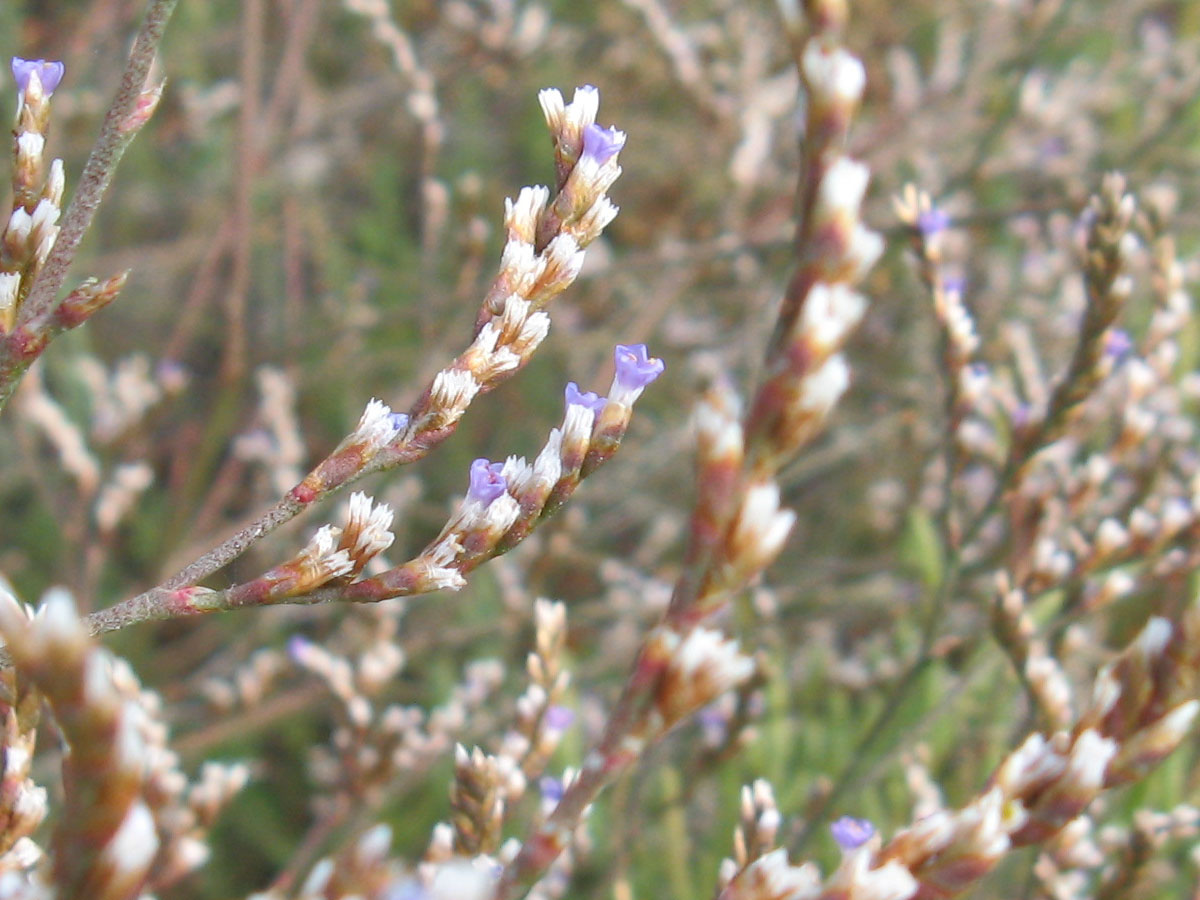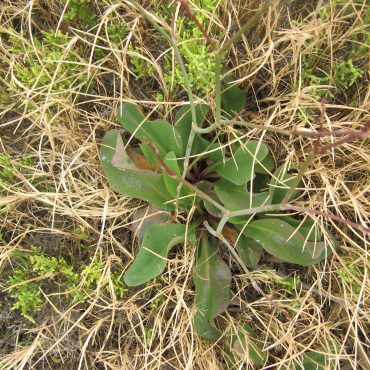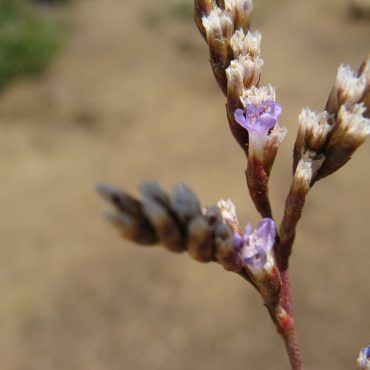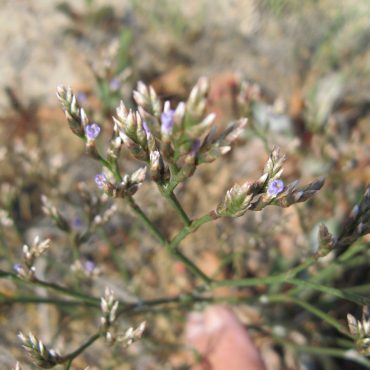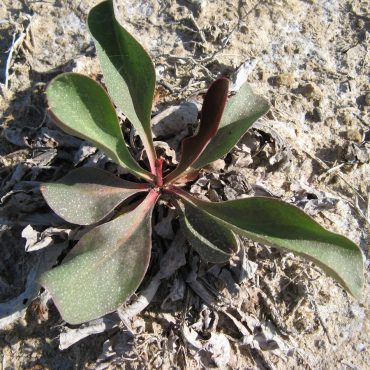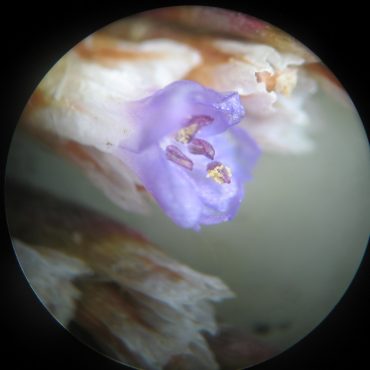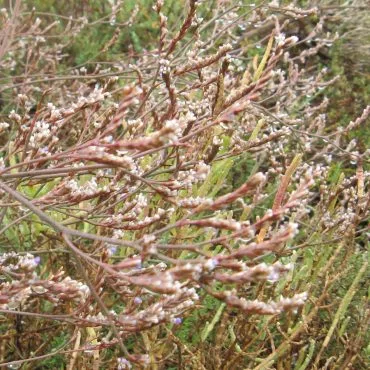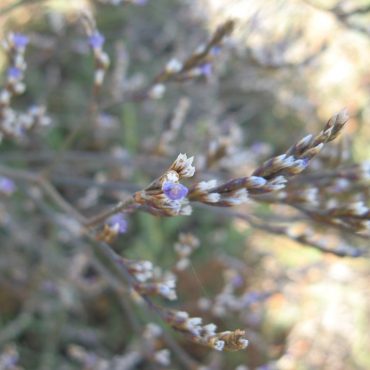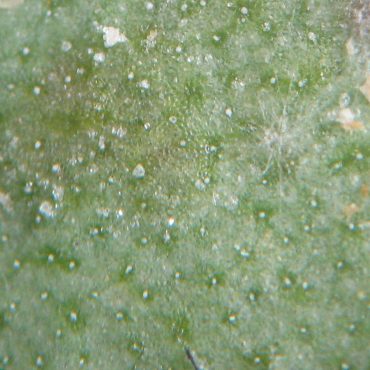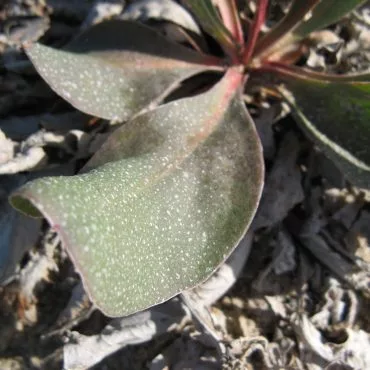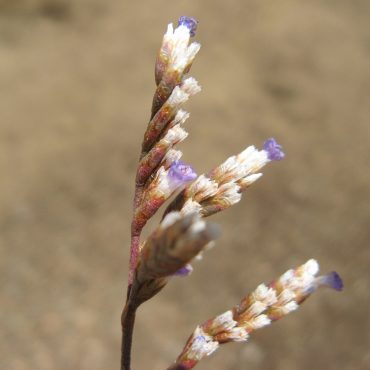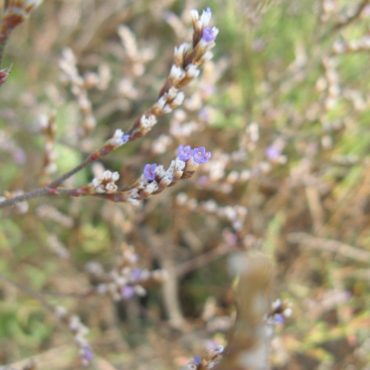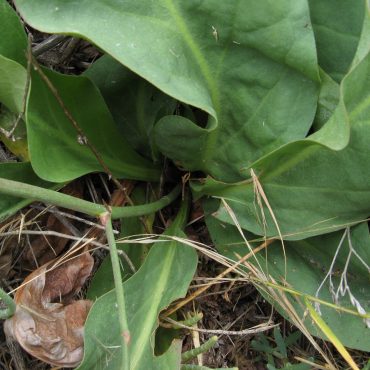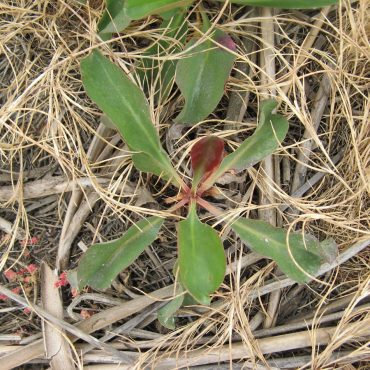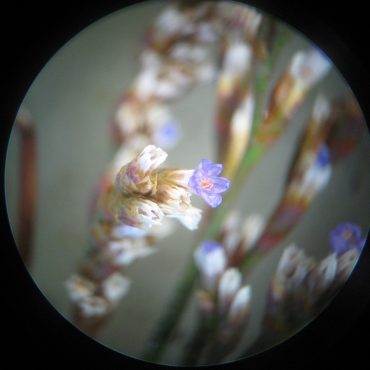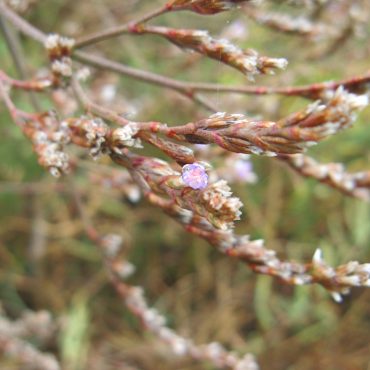There are four different species of sea lavender, sometimes called statice, at the San Elijo Lagoon Ecological Reserve, but only California sea lavender (Limonium californicum) is native to California. The others have been introduced to this area, and have established as part of the local flora, sometimes becoming invasive at the coast, at the beach, and along roadsides.
Superficially similar, the four species of sea lavenders are distinguished by their blooming period, by the length and shape of their leaves and by their flower color and arrangement on the flowering stalks. California sea lavender produces smaller and paler flowers than the others and the airy cluster gives the plant a more delicate appearance.

